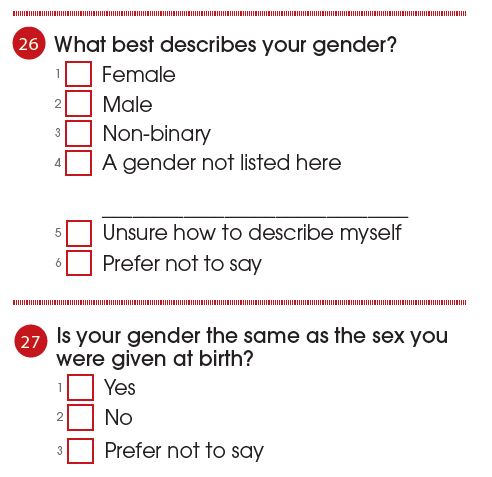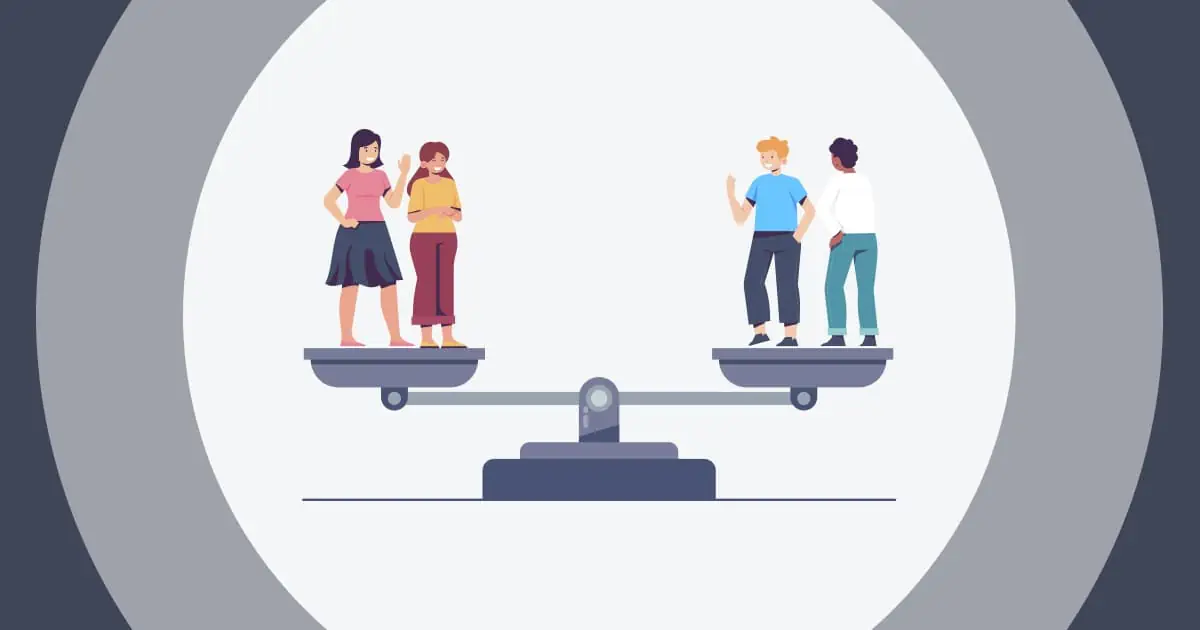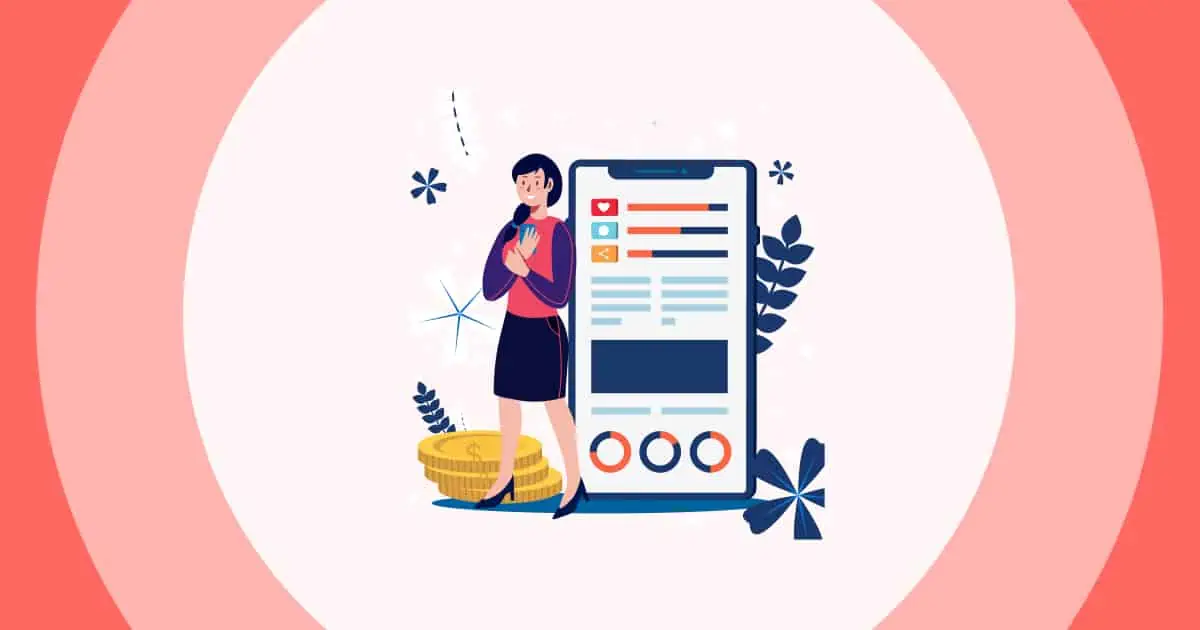Have you ever wondered how we categorize data in its most basic form? Enter the nominal scale, a fundamental concept in statistics that lays the groundwork for understanding categorical data.
In this blog post, let's dive into this concept with example of nominal scale to grasp its significance in organizing and interpreting information effectively.
Table Of Contents
- What Is Nominal Scale?
- Differentiating Nominal Scale From Other Types Of Scales
- Examples Of Nominal Scale
- Applications Of Nominal Scales
- Conclusion
What Is Nominal Scale?
Definition Of Nominal Scale
A nominal scale is a type of measurement scale in which numbers or labels are used to classify or identify objects, but the numbers themselves have no inherent order or meaning. In other words, they are simply tags or labels that categorize data into distinct groups.
- For instance, when classifying fruits, you can simply label them as "apple," "banana," "orange," or "grapefruit." The order in which they are listed doesn't matter.

Characteristics Of Nominal Scale
Here are some of the key characteristics of nominal scales:
- Qualitative: Numbers don't indicate quantity or magnitude, they simply act as labels. Instead of measuring the quantity, they prioritize identifying the quality of the thing, “what" instead of “how much".
- Categorical: Data is divided into distinct, mutually exclusive categories with no overlap. Each item belongs to only one category.
- Unordered: Categories have no inherent order or ranking. For example, "blue" and "green" eyes aren't inherently better or worse, just different.
- Arbitrary labels: Numbers or labels assigned to categories are just names and can be changed without affecting the data's meaning. Recoding "1" to "apple" in a fruit classification doesn't change the essence.
- Limited mathematical operations: You can only perform mathematical operations like addition or subtraction on nominal data if the numbers have quantitative meaning. You can only count how many items fall into each category.
- Descriptive, not comparative: They describe the distribution of data within categories, but not the magnitude or order between them. You can say how many people like each pizza topping, but not definitively say someone "likes" pepperoni more than another topping.
Nominal scales are the foundation for understanding basic data patterns and categories. While they have limitations in deeper analysis, they play a crucial role in data collection and initial exploration.
Differentiating Nominal Scale From Other Types Of Scales
Understanding the difference between nominal and other types of measurement scales is crucial for analyzing data effectively.
Nominal vs. Ordinal:
- Nominal: No inherent order, just categories (e.g., eye color - blue, brown, green). You can't say "brown is better than blue."
- Ordinal: Categories have an order, but the difference between them isn't known (e.g., satisfaction rating - very satisfied, somewhat satisfied, unsatisfied). You can say "very satisfied" is better than "satisfied," but not how much better.
Nominal vs. Interval:
- Nominal: No order, just categories.
- Interval: Categories have an order, and the difference between them is consistent (e.g., temperature in Celsius/Fahrenheit). You can say 20°C is 10° hotter than 10°C.
Nominal vs. Ratio:
- Nominal: No order, just categories.
- Ratio: Categories have an order and a true zero point (e.g., height in meters/feet). You can say 1.8m is twice as tall as 0.9m.
Remember:
- You can convert nominal data to other scales only if you lose information (e.g., nominal to ordinal, you lose order information).
- The more information a scale conveys (ordinal, interval, ratio), the more complex and powerful analyses you can perform.
- Choosing the right scale depends on your research question and data collection methods.
Here's an analogy:
- Imagine ranking fruits. Nominal - you only categorize them (apple, banana). Ordinal - you rank them by sweetness (1 - least, 5 - most). Interval - you measure sugar content (0-10 grams). Ratio - you compare sugar content, accounting for true zero (no sugar).
Examples Of Nominal Scale
Here are some common examples of nominal scales, covering various aspects of our lives:
Personal Characteristics - Example Of Nominal Scale

- Gender: Male, female, non-binary, other
- Marital Status: Single, married, divorced, widowed, separated
- Hair Color: Blonde, brunette, redhead, black, gray, etc.
- Nationality: American, French, Japanese, Indian, etc.
- Eye Color: Blue, brown, green, hazel, etc.
- Occupation: Doctor, teacher, engineer, artist, etc.
Products and Services - Example Of Nominal Scale

- Brand of Car: Toyota, Honda, Ford, Tesla, etc.
- Type of Restaurant: Italian, Mexican, Chinese, Thai, etc.
- Mode of Transportation: Bus, train, airplane, bicycle, etc.
- Website Category: News, social media, shopping, entertainment, etc.
- Movie Genre: Comedy, drama, action, thriller, etc.
Surveys and Questionnaires - Example Of Nominal Scale

- Yes/No responses
- Multiple-choice questions with non-ordered options: (e.g., preferred color, favorite sport)
Other Examples - Example Of Nominal Scale
- Political Party Affiliation: Democrat, Republican, Independent, Green Party, etc.
- Religious Denomination: Catholic, Muslim, Hindu, Buddhist, etc.
- Size of Clothing: S, M, L, XL, etc.
- Day of the Week: Monday, Tuesday, Wednesday, etc.
- Blood Type: A, B, AB, O
Bonus - Example Of Nominal Scale

- Coin Toss: Heads, tails
- Playing Card Suit: Spades, hearts, diamonds, clubs
- Traffic Light: Red, yellow, green
Keep in mind, that nominal scales are just about sorting data into groups without any special order. Getting to know these examples can help you pick the right ways to collect data and analyze it for your projects or research.
Applications Of Nominal Scales
Nominal scales have various practical applications across different fields.
- Demographics: They help sort out info like gender, age, ethnicity, and education level. This helps people like researchers and policymakers understand who makes up a group and make smart choices.
- Market Research: Businesses use them to organize details about what people like to buy, what they think about brands, and how they shop. This helps companies figure out who to sell to and how to advertise.
- Surveys and Questionnaires: Ever fill out a form where you have to pick from a few choices? Nominal scales are behind that. They help organize answers to questions like which soda brand people prefer or what political party they support.
- Medical and Health Sciences: Doctors and scientists use them to classify things like diseases, symptoms, and test results. This makes it easier to diagnose problems and plan treatments.
- Social Sciences: Researchers in fields like sociology, psychology, and anthropology use nominal scales to group things like personality traits, cultural practices, and social trends. This helps them understand how people act and why.
- Customer Segmentation: Businesses use them to group customers based on things like age, interests, and buying habits. This helps them create products and ads that appeal to specific groups of people.

💡Ready to enhance your presentations with interactive rating scales? Look no further than AhaSlides! With AhaSlides' rating scale feature, you can engage your audience like never before, gathering real-time feedback and opinions effortlessly. Whether you're conducting market research, collecting audience opinions, or evaluating products, AhaSlides' rating scales offer a user-friendly solution. Try it out today and elevate your presentations to the next level! Try Free Survey Templates today!
Conclusion
Nominal scales serve as fundamental tools for categorizing data without implying any inherent order. Through example of nominal scales, such as gender, marital status, and ethnicity, we see how important they are in organizing information in different areas. Knowing how to use nominal scales helps us understand complex data better, so we can make smarter choices and understand things more clearly.
Ref: forms.app | QuestionPro


